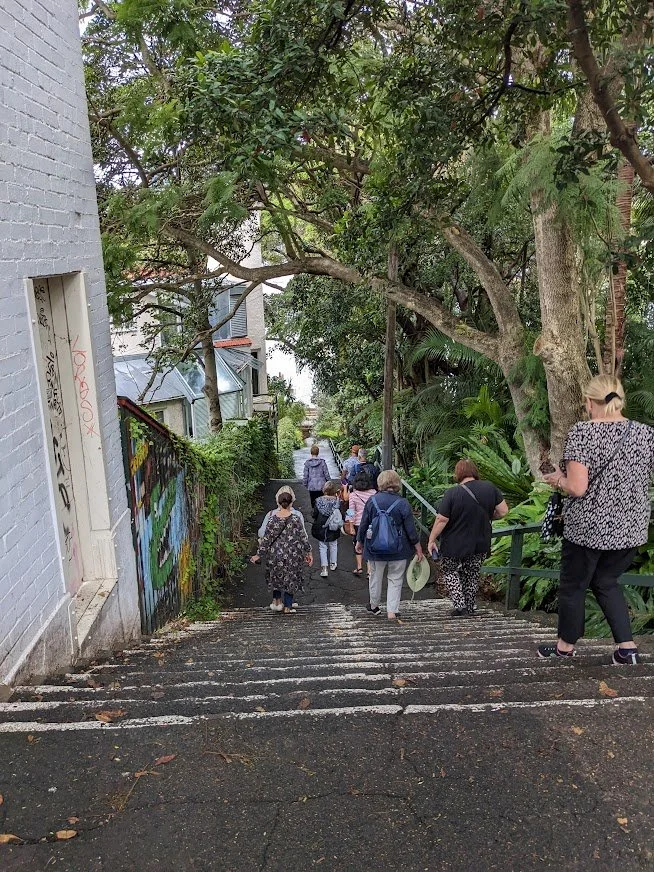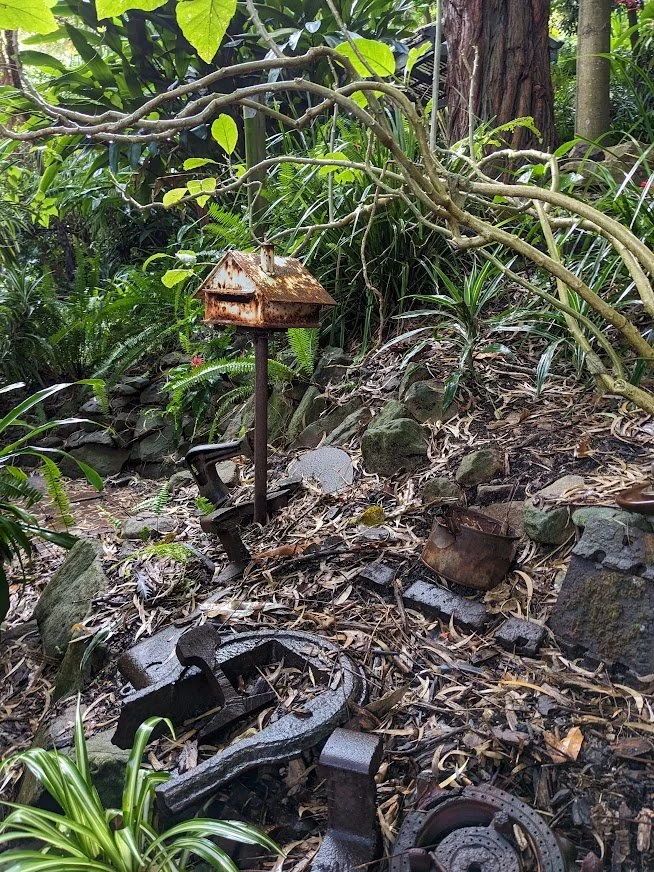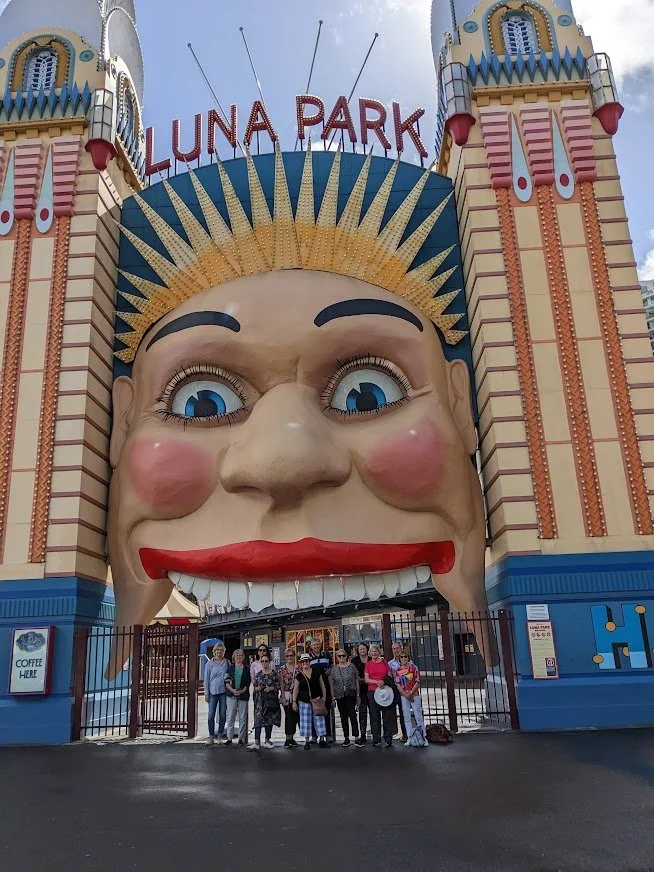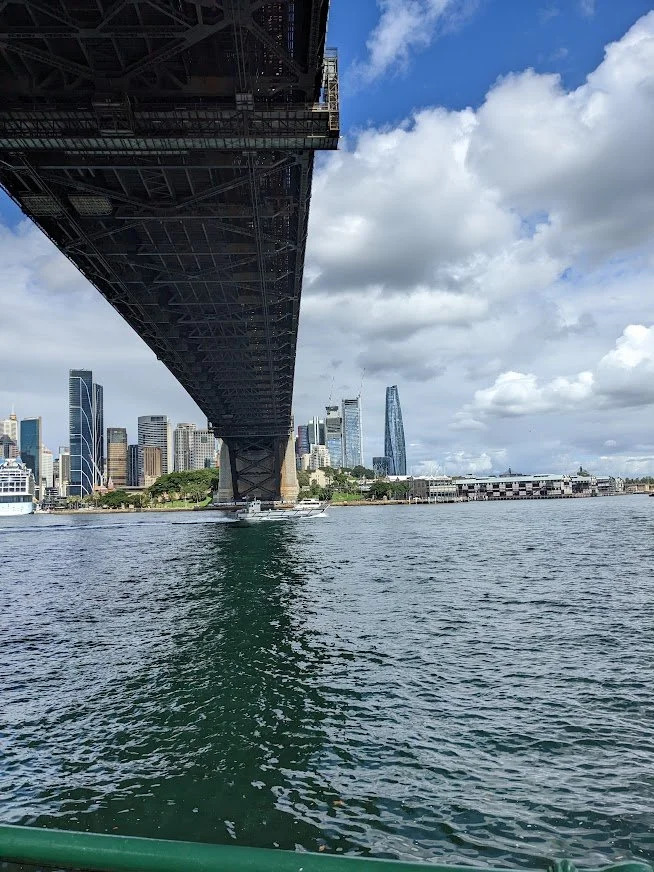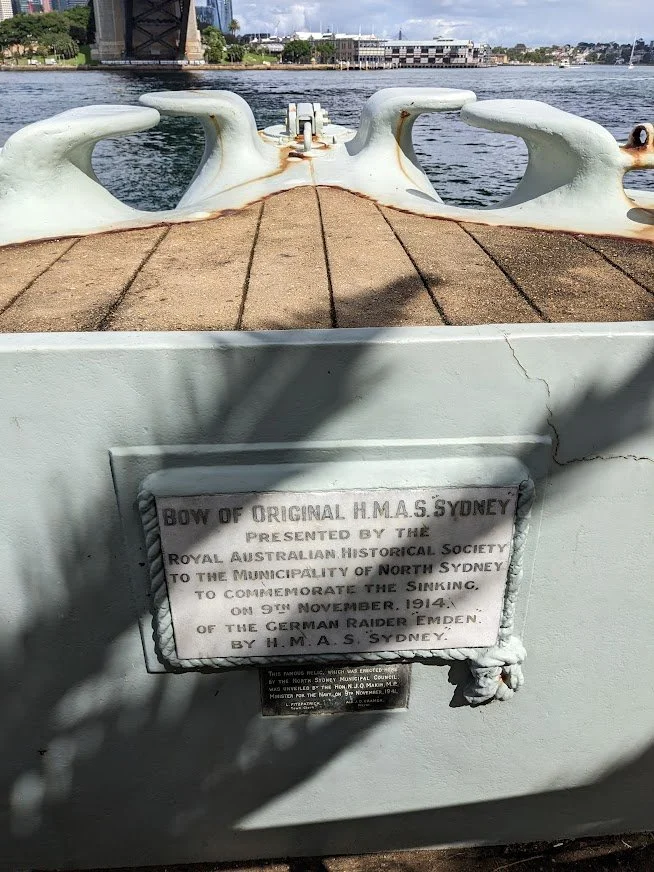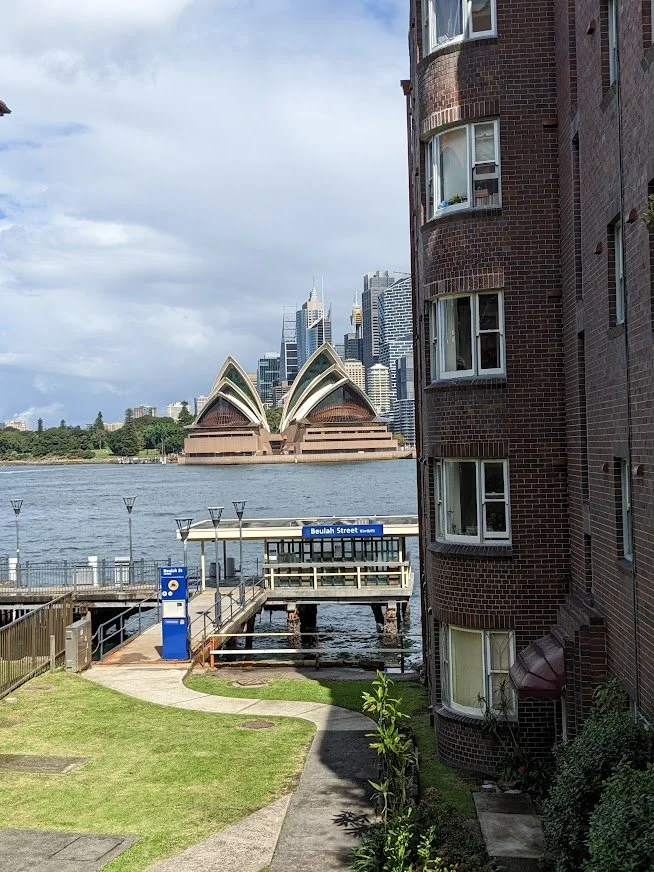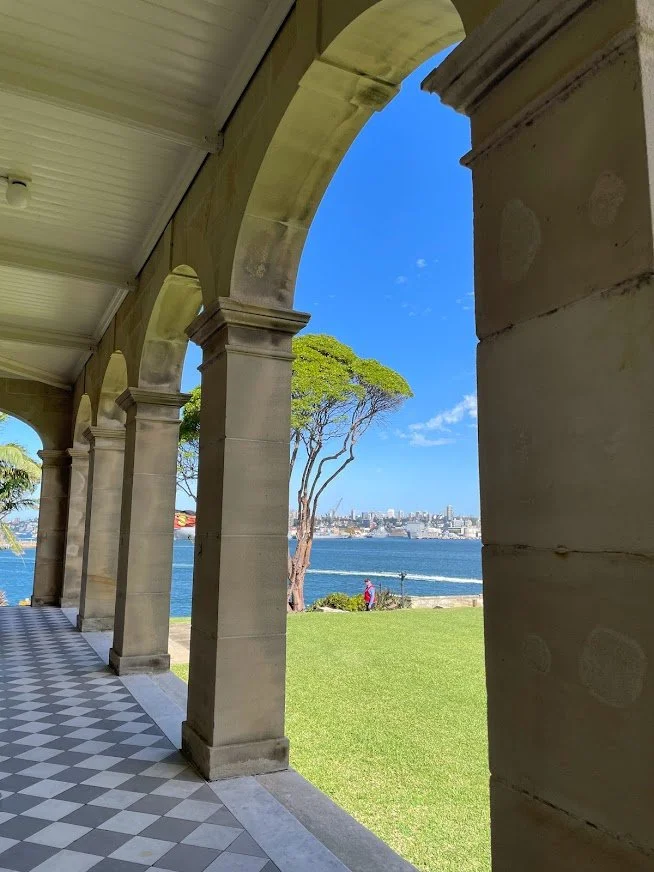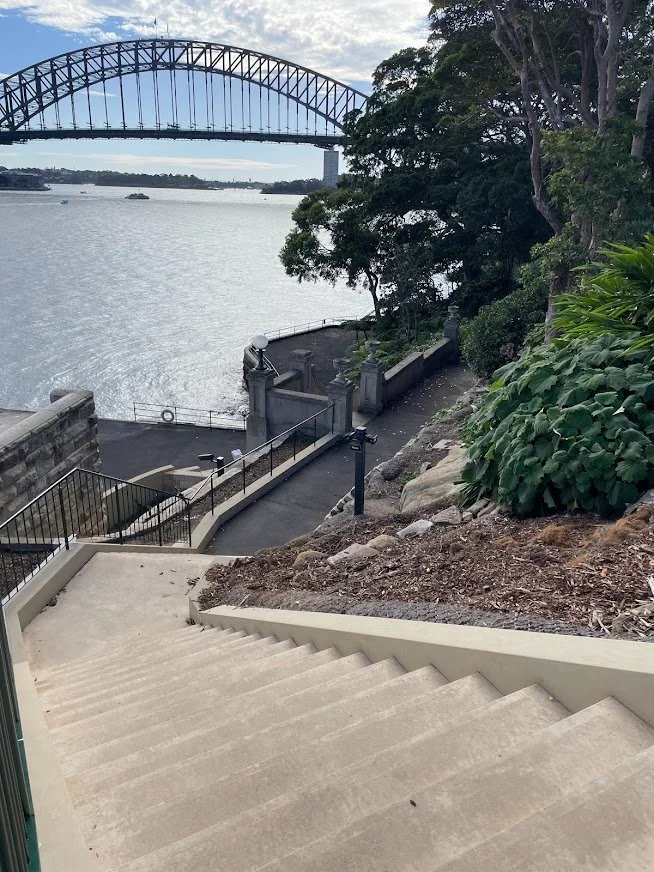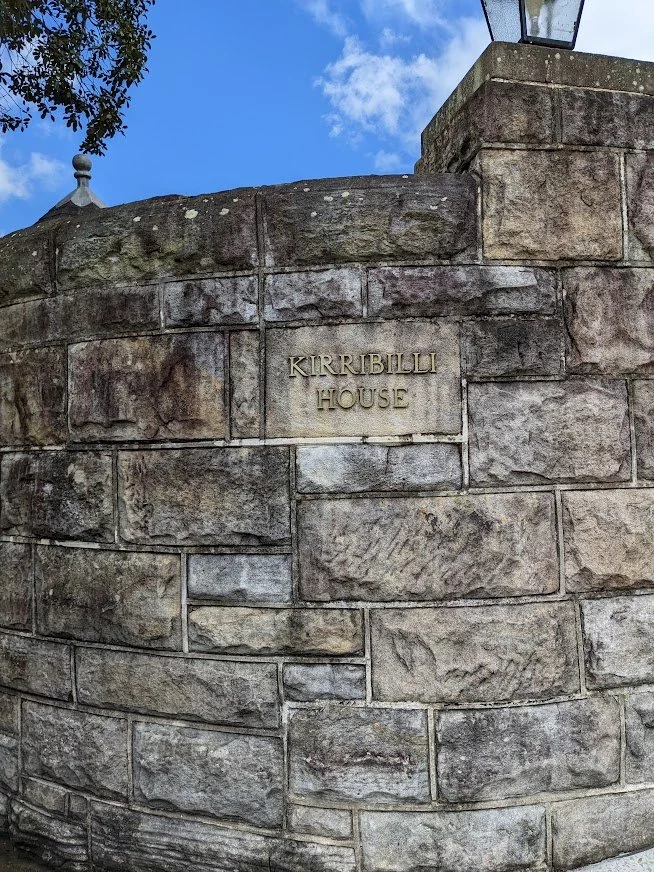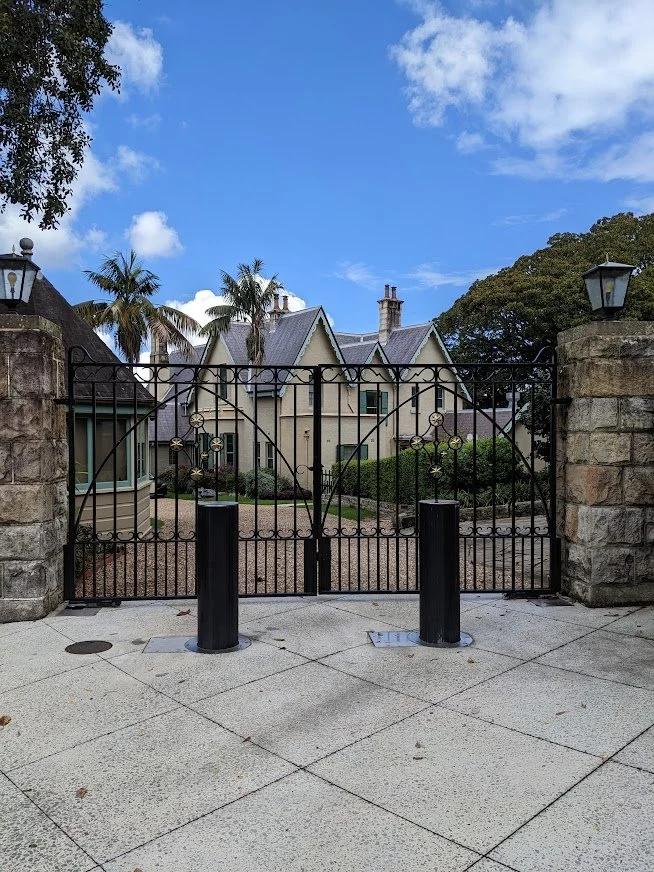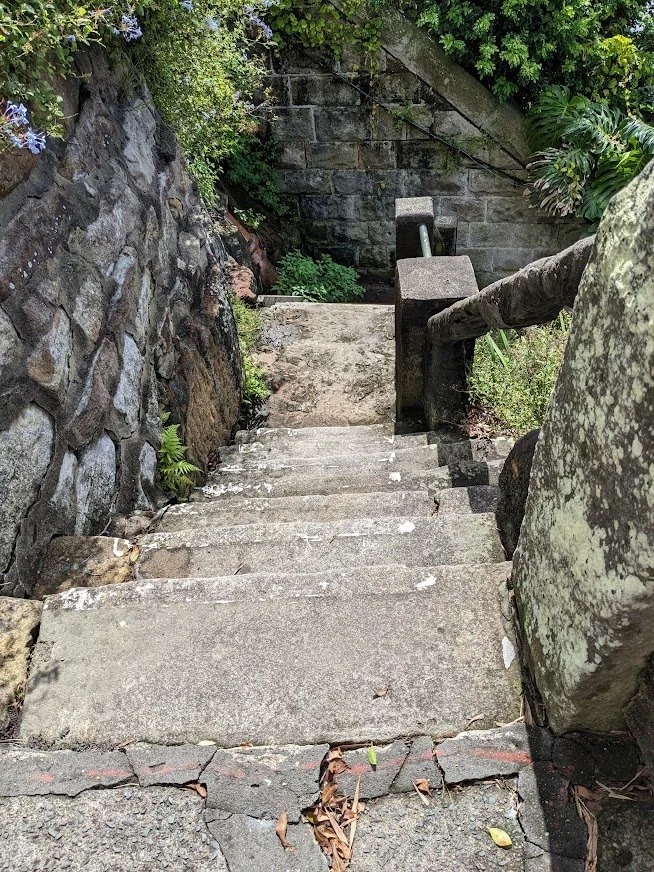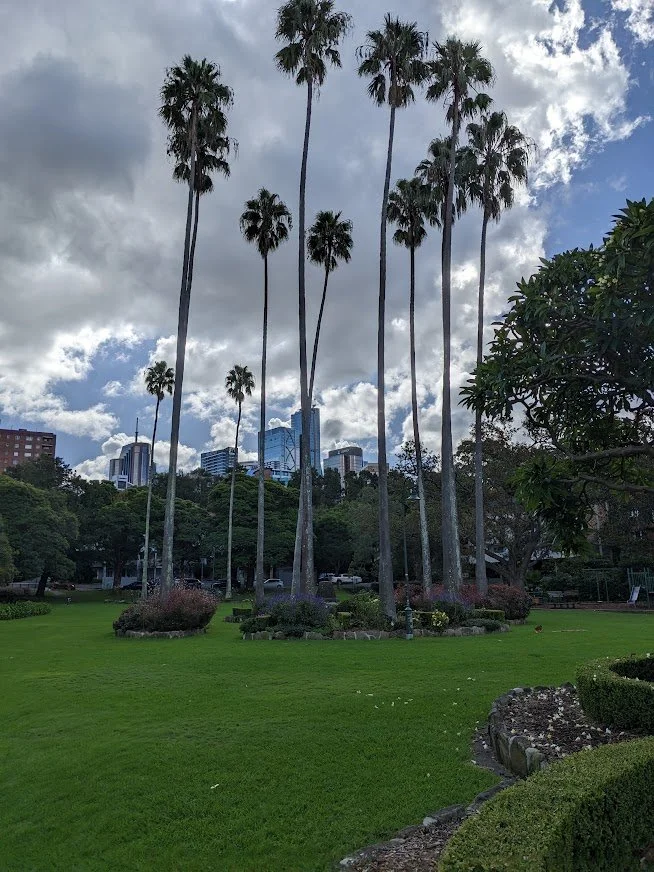Kirribilli and Milson’s Point
Background
Kirribilli, Lavender Bay and Milson’s Point are on the land of the Cammeraygal people. The name Kirribilli is derived from an Aboriginal word Kiarabilli which means ‘good fishing spot’. Another theory suggests that Kirribilli is an adaptation of 'Carabella', the name given by early colonist James Milson to a house he built for his daughter at 34 McDougall St. Prior to Kirribilli the suburb was known as Hunter’s Hill. The land was originally leased by and then part of was given to James Milson, one of the earliest free settlers who came for the promise of free land and one of the few experienced in farming from Lincolnshire. He initially leased the land in Jeffrey St from Robert Campbell for a dairy farm, orchard, beehives and fruit & vegetables. Milson’s Point is named for him, and Milson Island and Milson Passage on the Hawkesbury River are named for his son, Robert. According to the North Sydney Historical society: ‘James Milson is a controversial figure in local history, having made many claims during his lifetime (mostly in attempts to claim land) which either cannot be substantiated, or in some cases have been positively disproved.’ He, his sons and grandsons built a number of large residences in the area, some of which are still standing. The dwellings in the area were originally these large homes, Victorian terraces were built from the 1860’s and finally 20th century apartments. Coming from the Harbour Bridge, Kirribilli is on the right hand side of the railway line, Milson’s Point and Lavender Bay on the left.
As always, a coffee got us started at the lovely Sidando Cafe, full of great cakes, good coffee and books. One of our party had read that morning that if you picked up a book, turned to page 17 and the word that popped out at you on the page was the word other people thought of you. M’s word was ‘presumptuous’. Not sure of the science, but it was an entertaining 10 minutes.
Across the road is a drinking fountain for dogs. When animal lover Jessie Stuart Broomfield died in 1935 she bequeathed funds for the benefit of Sydney’s dogs, including the construction of drinking fountains for them. This example, installed in 1953, was one of several erected in Sydney. Clary Akon’s 2007 sculpture, Foxie, was inspired by Broomfield’s bequest.
We turned the corner into Lavender St and into Clark Park, which was established after completion of the Sydney Harbour Bridge. Much of the area was formerly part of the rear garden of Brisbane House which was demolished during the Bridge construction. It was named in honour of long-serving Council Alderman EM Clark.
Lavender Bay
Lavender Bay was named for the bosun George Lavender from the prison hulk Phoenix (it was previously known as Hulk Bay or Phoenix Bay). In 1915 Lavender Bay railway station was opened to take the place of Milsons Point railway station which lasted 7 weeks as passengers refused to alight and demanded the trains stop at Milsons point. The area is now railway storage sidings.
Donald Bradman lived in Bay View St and was one of the first to have a private telephone number. Norman Lindsay lived in the house named Heidelberg at 9 Bay View St.
We headed to Brett and Wendy Whiteley’s house at 1 Walker St. It was built in 1905 and turned into flats around 1929. The Whiteleys moved into one of the flats which was ramshackle and cheap rent. They purchased the property in 1974, reinstating it as a single dwelling with a tower verandah and large windows for the view. According to an interview with Wendy, no one wanted to live near the harbour there because it was a working industrial site and smelt. The house next door was owned by Peter Kingston, a painter, printmaker and cartoonist.
We head down into Wendy Whiteley’s Secret Garden, starting near the massive Moreton Bay fig tree right outside their house. When Brett Whiteley died, Wendy funnelled her love and grief into transforming a disused, derelict train yard space at the foothill of their house. She and a number of gardeners have planted natives, exotics, plants and herbs and landscaped the space with winding paths supported by raw bush timber balustrades, benches to sit on, cobbled stairs and retaining walls and paths. There are many surprise sculptures, wood carvings, metal bits and bobs and other art works scattered throughout the garden. And amazing harbour views. The garden’s long-term future was in a precarious balance up until as recently as 2015, when the NSW State Government granted North Sydney Council a 30-year lease on the garden to secure its future. This should hopefully retain public access to the garden after Wendy's home is sold as part of an extraordinary $100 million bequest she is leaving as a cultural gift to the people of NSW. We spoke to one of the four gardeners, who absolutely loves his ‘office’ but said the biggest changes in the four years he had worked on the garden is vandalism - he arrives at work some days to ripped out plants. Sad.
Down the hill to the Peter Kingston Walkway, named in 2018, which follows the foreshore and has many of his and his nephew’s creations. Peter Kingston moved to Lavender Bay in the 1970s when he worked as an artist at Luna Park with Martin Sharp. In 2002 he cast and installed these small statues commemorating characters from Australian popular culture and aspects of local history.
We wandered past the iconic Luna Park, closed and quiet. The original Luna Park arch was erected in October 1935 to welcome visitors coming from the train station. North Sydney Council approved its installation in gratitude for the employment provided by the Park during the Great Depression. Having fallen into disrepair, the sign was dismantled in 2006 but rebuilt in 2016. Luna Park is now heritage listed.
We walked past Milson’s Point ferry wharf, the main Sydney Ferry wharf and followed the foreshore under the Harbour Bridge.
We walked onto Jeffrey St wharf, no longer used by Sydney Ferries, still used by party and charter boats. The Mary Booth Lookout commemorates the physician and welfare worker (1869 - 1956) who founded a number of organisations for supporting soldiers and their wives and children and hygiene education amongst many other things - she was described as ‘incorrigibly active’. She established the Dr Mary Booth scholarship for women economic students at Sydney University.
On to Belulah St wharf with great views of the harbour. It is no longer a Sydney Ferry stop but is apparently good for fishing.
Up the stairs to Kirribilli Ave and Admiralty House, the Official Sydney residence of His Excellency General the Honourable David Hurley the Governor General since 2019. Part of the house was Wotonga, built in 1842, by Colonel John George Nathaniel Gibbes, Collector of Customs on land leased and then purchased from Campbell. It was renamed Admiralty House in 1885 when the government purchased it as a residence for the Admiral of the Royal Navy’s Australian Squadron. In this period a second storey and the colonnaded verandah were added to the House.
Admiralty House was handed to the Commonwealth Government in October 1913 and became the official residence of the Governor-General. It served as the primary residence of the Governor-General until 1931 when Sir Isaac Isaacs became the first Governor-General to live permanently in Canberra. Since 1935, Admiralty House has served as the Sydney Residence for 17 Governors-General.
The Admiralty House precinct is also home to the Marine Barracks, which were built in the 1850s (during the Crimean War) and are one of two remaining historical fortifications on Sydney Harbour.
A few years back an old Moreton Bay Fig tree had to be removed as it was causing damage to the Marine Barracks and sea wall. The tree had over 100 ton of roots removed – it must have been huge. It has been replaced by a lovely grassy slope, which looks like it was always there.
The property contains a decent sized swimming pool which has been taken advantage of by various Prime Ministers staying next door at Kirribilli House. The Property Manager recounted a story when she greeted Kevin Rudd after a swim, naturally as ‘Good Morning Prime Minister’. He responded – “I’m in board shorts – please call me Kevin”.
Next door is Kirribilli House, the secondary official residence of the Prime Minister. Although Kirribilli was never intended to be the Prime Minister's official primary place of residence, John Howard, Tony Abbott and Scott Morrison used the house as the primary residence instead of The Lodge in Canberra. It was designed and built in 1854 - 55 by Adolphus Frederic Feez, an architect and merchant, who acquired the land for 200 pounds and called the house Sophienberg. The house was renamed Kirribilli in 1891. It was sold to Arthur Wigram Allen in 1919 who intended to subdivide the land. Public outcry led the then Prime Minister, Billy Hughes, to resume the property in 1920. It was used by the staff of the Governor General until 1930, then leased to tenants and in 1956 set aside as a residence for the use of Australia's Prime Ministers when they need to perform public duties and extend official hospitality on behalf of the government during stays in Sydney.
No sign of any security, suggesting no one of significance is home.
Further down Kirribilli Ave, we came across the Lady Gowrie Lookout. Lady Zara Gowrie was the wife of the tenth Governor General who promoted the health and wellbeing of children and established early childhood centres from 1939. ‘Our children are our greatest hope, and anyone doing work for children these days is doing national work and giving splendid war service. Not only must we stand by our soldiers but we must also stand by our soldiers’ children… Every thinking person must realise that when this bitter strife is over, we must build up a better world, and it is only through the children that this can be done.’ Lady Zara Gowrie, 1939. What a woman ahead of her time!
We retraced our steps back to Carabella Ave, past the Royal Sydney Yacht Squadron, formerly Carabella mansion, established in 1862, as a private member sailing club. No one has membership so we sauntered further down the road. We arrived outside the Ensemble Theatre, the home of Australia's oldest continuously operating professional theatre company, founded in 1958. Located in a converted boatshed from 1960, it shows productions of contemporary works by both Australian and International playwrights. Originally funded by Hayes Gordon along with the Ensemble Studios acting school, which closed in 2009. There have only been three artistic directors in that time: Hayes Gordon, Sandra Bates and Mark Kilmurray.
The street the theatre is in, McDougall Street turns to magic in the spring. Photographers come from all over the world during this time of year to capture the allure of the alleys adorned with jacaranda trees.
Lunch was next door at the Sydney Flying Squadron Club, more accessible than up the road without membership! This club is the original home of the famous Sydney Harbour sailing skiff class, the 18-footers. The Club was founded by Mark Foy in 1891. He promoted a vision of open boat sailing with broad popular appeal for spectators and open to all sailors, regardless of financial background. In doing so, he challenged the gentlemanly sailing conventions of the day, particularly by having coloured sails and prize money!
We headed off to Milson’s Park, next door to the Flying Squadron for lunch to settle. A beautiful park with a community garden and play area.
In the background is the apartment block named Greenway, built in 1954 for social housing. It was the largest flat complex at the time, comprising 309 one and two bedroom flats over four buildings.
Well walked, well fed, we head home.
References
https://www.timeout.com/sydney/things-to-do/wendys-secret-garden#:~:text=Wendy's%20Secret%20Garden&text=The%20secret%20may%20be%20well,disused%2C%20derelict%20train%20yard%20space.
https://www.northsider.com.au/post/australian-artist-peterkingston-lavenderbay
https://en.wikipedia.org/wiki/Luna_Park_Sydney
https://adb.anu.edu.au/biography/booth-mary-5291
https://www.gg.gov.au/about-governor-generalgovernor-generals-official-residences/admiralty-house
https://en.wikipedia.org/wiki/Kirribilli_House
https://www.gowriensw.com.au/about-us/history
https://www.sydneyflyingsquadron.com.au/
https://www.ensemble.com.au/about/?gclid=CjwKCAjw9J2iBhBPEiwAErwpebdPOg2MskONyn9kF3HUPkPkLFCJ-pHuDBqS1rz0vBSzKOFYqffvShoCuisQAvD_BwE
https://www.mosmancollective.com/if-i-won-the-lottery-seven-times-over-i-wouldnt-leave-here-this-will-do-me/
https://www.athomeinnorthsydney.com.au/greenway.html
https://www.northsydney.nsw.gov.au/downloads/file/505/milsons-point-history-walk












